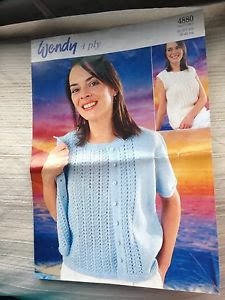Fassett the Knitting Designer
When his first book, Glorious Knitting, was published in the UK in 1985, for me it heralded an explosion of colour and innovation in my knitting world. I'd been a knitter since I was 7 and knitting seemed to me to have changed little in the intervening 10 years. The first thing that struck me then, and continues to inspire me today, is the totally immersive use of colour. In theory, such unbridled use of colour should not work, but it absolutely does. Somehow Fassett creates a cohesive whole from what, in the hands of someone less talented, would look like a cacophony of jarring, clashing hues.
What Fassett also brought to the knitting world, based perhaps on his fine art upbringing, was a clear use of sketchbooks and design development from the art world. The photography was art in itself and a far cry from the rather utilitarian photography being used by the many pattern and yarn companies. Compare, for example, Steve Lovi's funky photography...
with the more usual pattern photography of its day...
(NB. There were exceptions of course but these would be familiar in most knitters' pattern collections!).
Also of note was the source of inspiration for the designs and the clear link between the source and the finished design. Fassett was drawing on sources that were pretty much unique in the knitting world. Not to diminish the talent of designers but there was little evidence of how a design came into being and designs seemed to be much more formulaic and a direct interpretation of high street fashion, traditional or tried and tested designs. This was probably largely indicative of the transition of knitting from practical, functional garments that would be less expensive to make than to buy and garments that were intended to be made for pleasure and fashion.
The Tapestries
Not content with knitting, Fassett also has an impressive portfolio of tapestry work. Ranging in size from smaller pieces such as cushion covers, in traditional square and rectangular shapes, not surprisingly Fassett takes the medium to new levels with complex shaped pieces, rugs, wallhangings, upholstery and even shoes! The imagery is equally wide-ranging - pottery, plants and animals, architecture and collected objects.
Patchwork
Patchwork was, one assumes, a natural progression for anyone with such a passion for shape and colour. However, reading his autobiography (Dreaming in Colour), Fassett took a bit of persuading to take this on! And it's to our benefit that he did, since his patchwork pieces are a delight.
Fabric Collections
Fassett has also designed fabrics for Rowan and under his own label. What surprised me was that he had doubts about his ability to produce fabric designs and it took a gentle push from Trisha Guild to persuade him to take on this new aspect of textile art (Dreaming in Colour pg 117). What is interesting but not surprising is that the approach was founded in fine art first and foremost. These are a couple of examples of artwork for fabrics.
Cabbage Patch
How amazing is the array of colours for this one design?
Peony
I felt very privileged to see these - it is clear that they are geniune working documents and an amazing insight into the design process. This particularly caught my eye!
A selection of Kaffe Fassett fabrics and ribbon.
As to whether Fassett is a designer or an artist, in his autobiography he draws a distinction between the two (Dreaming in Colour pg 126). Clearly he sees some of his work as art, other parts as design. Whilst not expressing his reason for this distinction explicitly, he goes on to discuss his painting and fine art as being his return to his artwork. From that might one infer that he regards his textile work as design and his painting as art? I think that would be for him to conclude and not me!
Jason Collingwood
For my second designer I have chosen British weaver, Jason Collingwood. Rather than make this a super-lengthy post, I have covered his work here This post was based on a talk and exhibition of Jason's work from the Open Day organised by the North Cheshire Guild of Spinners, Weavers & Dyers that I was lucky enough to attend.



























